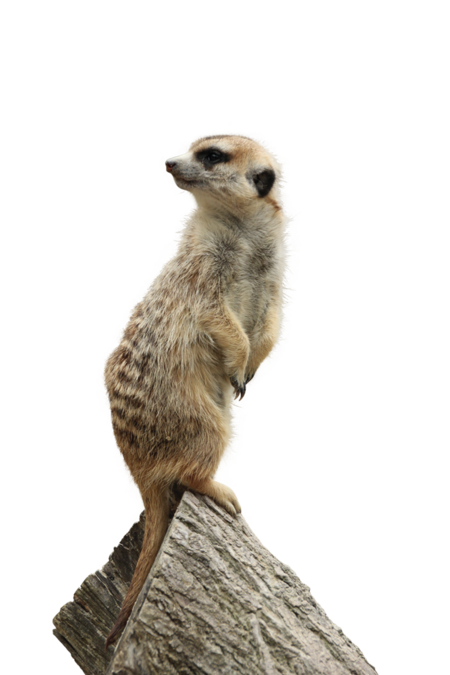Meerkat
Suricata suricatta
![Meerkat [Translate to English:] Ein Erdmännchen mit Blick Richtung Kamera steht auf einem Felsen und hält aufmerksam Ausschau.](/fileadmin/_processed_/e/6/csm_erdmaennchen-tierpark-hellabrunn-afrika-tierlexikon_dad3722836.jpg)
- Family
- Mongooses (Herpestidae)
- Weight
- 600 – 900 g
- Habitat
- Savannahs and semi-deserts
Females in charge
Meerkats are remarkably social and live in matriarchal family groups led by a dominant female. They hunt in the daytime, but also enjoy sunbathing outside their burrow. Like many mongoose species, their diet comprises insects, spiders and small vertebrates. Meerkats use their long, sharp claws on the forefeet to dig for prey as well as dig burrows up to 3 m deep.

Family comes first
Meerkats reach sexual maturity around the age of one year. After a gestation period of about 80 days, the dominant female gives birth to two to five pups. The newborns are fed mother’s milk for around 11 weeks, which is supplemented with pre-chewed solids from the sixth week. Pups become independent at the age of three months, but remain within the family group.
Meekats hunt in a group with one member acting as a sentry. If a predator is sighted, the sentry will warn the others by emitting a loud whistle.
Distribution
